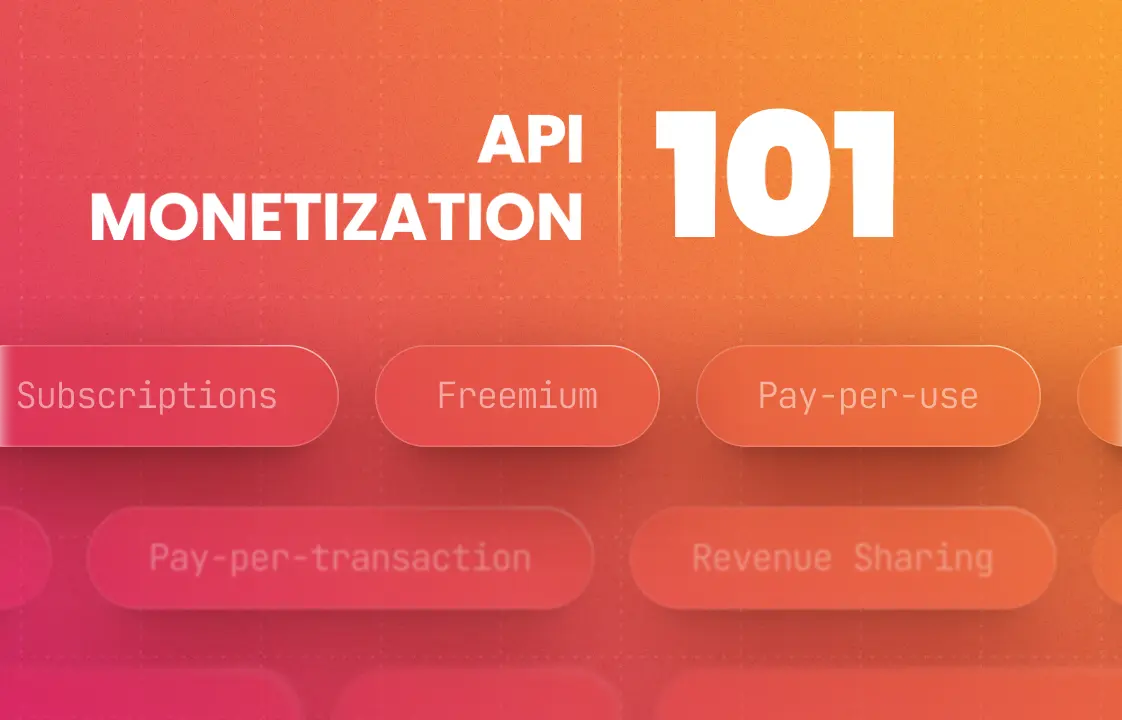
API Monetization has emerged as a pivotal strategy for generating revenue in the rapidly evolving landscape of SaaS, Fintech, and DevTool companies. With the growth of artificial intelligence, the shift of complex business logic behind APIs has become increasingly popular. In this context, understanding the various API monetization models and strategies for success is crucial.
API Monetization Models
At OpenMeter, our expertise extends to aiding diverse clients monetizing their APIs. This spans exciting new domains like AI and extends to modernizing traditional industries such as cargo and manufacturing. A one-size-fits-all approach doesn't apply here. Let's discuss the most prevalent API pricing models:
- Subscription: A classic API monetization model where users access a predefined quota of API usage within a typically prepaid plan. Upon reaching this limit, customers are prompted to upgrade for additional capacity. This model is beneficial for predictable budgeting and consistent revenue streams.
- Pay-Per-Use: Each API call results in a charge. This can be combined with volume discounts, where prices become lower as consumers use the API more. Usage-based pricing is increasingly favored for its flexibility, allowing customers better control over costs and fostering organic growth for providers.
- Pay-Per-Transaction: A nuanced take on consumption-based pricing, this model charges for specific business transactions that may encompass multiple API calls. For instance, an AI-powered chatbot might bill per completed support ticket rather than per message exchanged.
- Freemium: Offers limited API access at no cost, with paid upgrades available once usage caps are reached. This model can effectively integrate subscription and pay-per-use frameworks as a powerful user acquisition and conversion tool.
- Revenue Sharing: In this model, the API provider earns a percentage of the revenue generated from each API call. A classic example is Stripe's model of taking a cut from each payment transaction processed.
Indirect Monetization Strategies
Beyond direct charging, businesses can leverage APIs as marketing tools to enhance brand awareness and drive traffic to primary services. APIs can also foster ecosystems of developers and partners, leading to shared innovations and valuable feedback for continuous improvement
Enforcing API usage limits
Subscription or freemium API monetization models come with API usage limits by definition. But even with pay-per-usage models, it's a good idea to introduce quotes to safeguard against uncontrolled costs, particularly with expensive APIs like LLMs. This can be tricky to implement for multiple reasons:
- Balancing Act: Ensure that enforcement measures don't disrupt critical customer operations
- Low Latency: APIs used in online traffic require a low-latency usage gating
- Automated Messaging: Inform customers as they near their usage limits.
A best practice with usage limits is to enforce them incrementally. First, you can message the customer if they are approaching their limits. It's also common to tolerate a reasonable overage before you take more restrictive actions. The next step can be to slow down their consumption instead of cutting it completely. You can apply rate limits, daily limits, and so on. And eventually you need to cut their access when their usage risks your own profitability.
(You can learn more about how to prevent expensive overages in our previous article.)
Calculating API cost and margins
Understanding the cost implications of your APIs is vital. This involves analyzing cloud spending and considering support, vendor expenses, and other costs. Effective margin and unit cost analysis can inform pricing strategies and unveil areas for optimization.
For this you need to understand the cost of each API call. This is not trivial, as it involves the cost of the underlying infrastructure, the cost of the API itself, and the cost of the support and maintenance.
(For a deeper dive, refer to our article on Unit Economics.)
How can OpenMeter help?
At OpenMeter we help companies to monetize their APIs with:
- Scalable, Accurate Metering: Ensuring precise tracking of API usage.
- Real-Time Customer Dashboards: With embeddable customer portal
- Enforcement of Usage Limits: Implementing effective and low latency usage policies.
- Cost and Margin Analysis: Providing comprehensive financial oversight.


